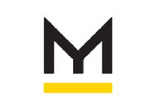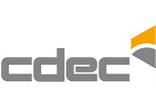
Skybridges, Test Towers and Innovations
thyssenkrupp Elevator sets the Tech Trends and Highlights for 2020
2020 is knocking on the door. What will it bring for the technologies that disrupt - or even - revolutionize industries ? “Que será ?”, as the famous song goes, for indeed, the future is hard to predict. Sometimes, there are exceptions.
Such is the case for thyssenkrupp Elevator, whose research engineers have not only developed smart innovations for next year but have also prepared for the future. You could say that they have looked into the crystal ball and discovered some exciting trends and key highlights for 2020. A snapshot of these is captured below :
- Skybridges : One of the main trends for 2020 will be the further development and increasing use of what has been named ‘skybridges’ as an architectural element. No longer just a connection between two buildings at lofty heights, but instead a useful area and living space. Skybridges are the transportation routes of the future instead of a mere architectural connection. For example, rather than holding the function of a pedestrian bridge between skyscrapers, these areas will instead be turned into living spaces at exciting heights. These areas will include swimming pools, event spaces, meeting rooms or even a skybar. As a cross-connection with many functions, they also pave the way for our horizontally moving ropeless system, MULTI, comments Markus Jetter, Head of Research & Innovation Center Rottweil at thyssenkrupp Elevator. thyssenkrupp Elevator funds an 18-month research project, “Skybridges : Bringing the Horizontal into the Vertical Realm,” which will culminate in the publication of a Council on Tall Buildings and Urban Habitat Technical Guide on the topic, with richly-detailed narratives and technical drawings, as well as historical overviews and future speculations about skybridges’ potential.
- At the Expo 2020 in Dubai, MULTI will be presented as an important innovation at the German pavilion, starting in October. MULTI is the world’s first ropeless elevator system specifically made for skyscrapers, which will dominate the development of future urban mobility. MULTI is driven by linear motors and cabins which move independently in a single shaft, just like in a metro system. That’s what makes it perfect for multiple innovative applications. Moreover, it opens exciting new perspectives for architects and developers.
- Tower-running, an endurance sport which sees people running up tall manmade structures : High-flying goals are what the thyssenkrupp towerrun’s participants try to achieve, too, at thyssenkrupp’s very own tower running event in Rottweil, Germany, on September 20th, 2020. The participants will have to conquer 1,390 steps and 232 meters in height. In 2019, some 1,000 runners from 18 nations took part in the competition. Next year, there will again be races in different valuation classes – including police officers and firefighters in full equipment.
- Rising in 2020, the tallest elevator test tower in the Western Hemisphere, located in Atlanta, will reach its full height of 128 meters in spring, rising two meters each day in order to reach this staggering height. The tower will be the core of thyssenkrupp Elevator’s US Innovation and Qualification Center and the crown jewel of the company’s new North American headquarters at The Battery Atlanta. Here, the so-called slip-form construction is used. Slip-form is a moving formwork system that is set down on the foundation and involves the continuous pouring of concrete into a moving form. Relatively rare in the U.S., this process was used in the creation of thyssenkrupp Elevator’s state-of-the-art 232-meter test tower in Rottweil, Germany.
- Shorter lift-waiting times with AI : Intelligent algorithms based on Artificial Intelligence have a huge potential to disrupt the industry in 2020. As we know, taking an elevator often requires a long waiting time before the cabin arrives. New technology means that algorithms will control traffic flows more intelligently across any given building. They are also embedded with a learning process, with every action telling the system what could be improved. The system then immediately learns what works well. Such learning technology by thyssenkrupp Elevator will ultimately lead to the best guarantee for minimal waiting times at the elevator.
- Fixing the lift, even before it breaks : Waiting for a working elevator is timeconsuming enough - waiting for a broken elevator to be fixed can seem endless. Even the most advanced technical solutions require maintenance and it is far better to do this proactively, rather than after the incident has occurred. Predictive maintenance delivered by thyssenkrupp Elevator‘s MAX reduces downtime to a minimum as well as optimizing spare part logistics. Achieved through artificial intelligence, this technology will get even smarter in 2020 by employing “human“ methods of learning through carefully examining incidents that occur and drawing conclusions, motivated by a system of bonus points that rewards accurately identified incidents. Collaborative robots for installation and service will take over complex and risky tasks, such as the measurement of a shaft which will relieve the workload of fitters and technicians considerably.
- The robotic future : Robots are already showing us what they can do. This year, thyssenkrupp Elevator presented a new robot interface that enables automated delivery service inside buildings. This means that a robot can now also communicate with the elevator and move freely. The robot determines the destination floor and the elevator starts moving. With the help of image processing technology, the elevator can detect whether there are already too many people in the cabin and if it must wait or send another one without the need for additional call. “The new thyssenkrupp Elevator interface not only benefits hotels and hospitals, but a fashion manufacturer is also testing robots and interfaces for transporting goods from the warehouse to the store rooms, Javier Sesma, Managing Director of the thyssenkrupp Elevator Innovation Center in Gijón, Spain, explains. The company is also testing its own autonomous vehicles to bring spare parts to technicians on site in the future.
- Smart delivery : Regarding the delivery of spare parts, intelligent systems have taken a big step. For example, big data analysis identifies components that will be needed by technicians on particular routes – throughout the day and even throughout the whole week. This means they will literally have everything on board on Monday for what will be needed on Friday. Defect parts can be removed just in time – without any order or waiting times. Next year, thyssenkrupp Elevator will introduce an elaborated concept for a corresponding spare parts warehouse.
- Smart energy : Smart energy management is not an option in the 21st century – it’s a must. Sophisticated elevator solutions can contribute to such management significantly. For example, they will ensure that brake energy will not need to be fed back into the grid but can be used for further powering of the elevator instead. The operators of buildings will save costs because they can better control the much dreaded ‘peak power’. Soon, peak performance can be reduced by up to 60 percent through smart energy management by thyssenkrupp Elevator.
- Passenger boarding bridges : Unveiled in 2019, a Remote Control System by thyssenkrupp Elevator enables airports from 2020 onwards to control their passenger boarding bridges conveniently and efficiently from a remote post. Previously, it was necessary to move the bridges manually at each landing – which was time-consuming. The Remote Control System is fitted with a set of surveillance cameras to give the operator an enlarged field of view when docking and undocking passenger boarding bridges remotely. With the new technology, turnaround times of airplanes will be improved at busy airports around the world. Speed it up with city walks : The time up to the turn of the year is advancing – and people in big cities will be moving at least as fast in the future. They benefit from socalled city walks, i.e. iwalks that do not require a pit and can therefore be installed almost anywhere : temporarily or permanently, horizontally or inclined, in existing underground metro stations in an historical street or in a skybridge. City walks are like a flying carpet, so to speak, that moves passengers forward in an almost magical way. The good thing about it is that no digging work is required for installation. Whether flat or with a gradient, roofed or open : City walks are the ideal solution for equipping cities with continuous and sustainable pedestrian transport systems, comments Javier Sesma.
One thing is for sure : 2020 will be a very exciting and versatile year. thyssenkrupp Elevator will initiate much innovation and will bring existing solutions to the next level. And there’s another thing that’s for sure : 2020 will be a great year for urban mobility and the further development of urban life – including more comfort and more flexibility.
Press release sent by thyssenkrupp Elevator





















